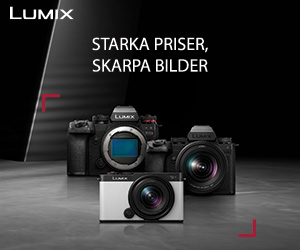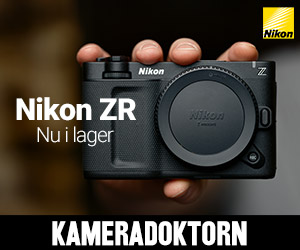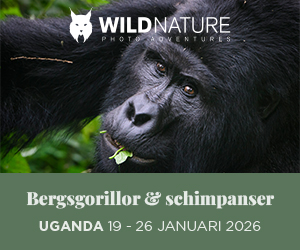Hej
Har nog bara länkat innan? men lägger nu ut texten här över två 400mm tester som är gjorda av den tekniska redaktören på Naturescapes
Texten och bilderna kommer man nog bara åt om man är medlem.
Canons 400mm 5.6 är det skarpaste 400mm alternativet i denna test, men hade man testat tex nikon 400mm 2.8 eller Canon 400mm 2.8 så hade de nog med all säkerhet varit skarpare.
Dock i verkligheten kan ett mindre skarpt objektiv ge skarpare bilder i vissa situationer som vid dåligt ljus om det tex ger en snabbare slutartid om det är ett ljusstarkare objektiv eller har bildstabilisering vid handhållet eller kanske på beanbag. För tex aktion kan ju ett mindre skarpt objektiv ge flera skarpa (i focus) bilder om AF är bättre än ett skarpare objektiv med dålig AF, dvs färre bilder blir "skarpa" (i focus). Speciellt också med olika telekonverter kombinationer.
Själv handhåller jag ju mest mitt 400mm 5.6 vilket är mindre optimalt jämfört att ha det på stativ, rent skärpemässigt.
Texterna kommer här
by E.J. Peiker on Tue Mar 18, 2008 11:09 am
Several months ago I promised a sharpness test of the various 400mm options in the Canon lineup. My efforts were delayed some as I wanted to be sure my 100-400 lens was operating optimally. After allowing Canon Irvine to fully optimize the sharpness of my 100-400 I was finally able to do the test. All tests were done on a Canon EOS 1Ds Mark II at f/5.6, f/8, and f/11.
The candidates are the EF400 f/4DO, EF400 f/5.6L, EF100-400 f/4.5-5.6L, EF300f/2.8L + 1.4x, EF 70-200 f/2.8L + 2x.
Unfortunately I did not have a 400/f.2.8L lens at my disposal which I suspect would win the test.
I used the popular money test. A clean $5.00 bill was flattened and taped to a white background which was in turn taped to cardboard and then taped to a wall. This insures flatness. A tripod was set up 15 feet from the subject. Everything was perfectly squared up and level. All images were taken at 1/60 sec with mirror lockup and bounced flash to eliminate any exposure variables - all shots received at least 93.75% of the light from the flash.
The results are not very surprising and my visual observations are 100% correlated with file size. The images that I found to be more detailed visually also had the largest CR2 and JPEG file sizes. This is due to the fact that a more detailed file is less compressible than a less detailed file.
The conclusion:
At f/5.6, the EF400/5.6 is the clear winner, only the 400DO challenges it for supremacy presumably due to it being stopped down by one stop where all other candidates are wide open at f/5.6. A significant step down and nearly identical are the 100-400 and the 300/2.8+1.4x. The 70-200 with 2x is awful relative to the others losing almost all fine detail.
At f/8 the order is the same but the 300/2.8+1.4x is almost on parity with the 400/5.6 and the 400DO. The 100-400 is still significantly behind and the 70-200+2x has closed the gap to the 100-400.
At f/11 all lenses and lens TC combos should be performing as close to optimum as possible. The 400/5.6 is still the winner with the 400DO and 300+1.4x coming in tied for a close second. The 100-400 is significantly behind the top 3 but also significantly better than the 70-200+2x. It is also interesting that the 70-200 with 2x falls off at f/11 in image quality. The test was repeated three times with identical results so this is not an artifact of the testing but an actual condition.
Overall, this tests rules out, for me anyway, the 70-200 +2x as a viable option and confirms my previous experience with many different versions of the 100-400. The 100-400 is not up to the level of the 400 primes or even the 300/2.8+1.4x even on a finely tuned sample. Certainly I am not ruling out the possibility that there are 100-400 lenses out there that are better than the sample used here but it is most certainly not the norm and is likely rare. Analyzing the histograms also shows that the 400DO has slightly lower contrast than the 400/5.6.
Another observation also confirms my field experience. The 400/5.6 can be shot wide open with almost no fall-off in image quality."
Test mellan Nikon 200-400mm f/4 VR och Canon 400mm 5.6
"by E.J. Peiker on Mon Aug 04, 2008 2:41 pm
I probably should have my head examined for posting this especially after the drubbing I got here and in other forums (where I didn't even post it) about the results of my Canon 400mm shoot-out. This is an emotional issue for many and, understandably, folks simply do not wish to see something they spent a lot of their hard earned money for not fare well. As a recap, in the original test, my EF400 f/5.6 trounced the 400DO, the 100-400 zoom, the 300 f/2.8 w/ 1.4x converter and the 70-200 with 2x converter. Also as a refresher, the tests are done with a single sample of the lens that is working properly and in tests has not shown to be back or front focusing in any way. Furthermore it is only a test of the center of the lens and is not intended in any way to be a test of anything but center sharpness (and contrast secondarily). It is not a definitive lens test as it doesn't test anything outside of the center, doesn't test for linear distortions, doesn't test for chromatic aberration, etc, etc. I simply wanted to know which of the 400mm options I had at my disposal would give me the most detail. Since my primary subjects for a 400mm lens are animals (avian and land based), I felt center sharpness was enough of a test to give me a good idea as we generally do not put the eyes of an animal near the frame edge or in the corners.
Conclusion:
My Canon 400 f/5.6L is downright scary sharp, even wide open. Perhaps I got on the good end of the sample variation curve with this one but it again soundly beats it's competitor at all apertures tested. That said, outside of f/4, the Nikon posted some excellent results for a zoom - roughly on par with the results of the prime 400 DO (but without the weird bagel shaped specular highlights). The lens does drop off considerably in both contrast and sharpness at f/4. f/5.6 and f/8 on the 200-400 are indistinguishable and there is a slight drop off at f/11. I can not attribute this drop off to diffraction as the Canon lens does not drop off at f/11 on the same camera. It is possible that focus was not as accurate due to using the adapter on the Nikon lens so just for verification I did the test on the D300 and the results were identical to the results on the 1Ds mark 2. I also ran a focus calibration on the lens using the moire pattern distortion test in Live View and found focus calibration to be perfect at the factory default. There is also a noticeable contrast difference with the Canon being more contrasty and color being a bit more accurate on the Canon although I put little stock in color comparisons because these can be so easily corrected in RAW conversion - I did not do any manipulation of color to any of the files. Finally, the 200-400 results sharpen up very nicely with only a very modest amount of sharpening.
Am I disappointed in the 200-400 results? No, not one bit. I expected it to be softer than the 400 f/5.6 which is the only long lens I have ever found to not have significant drop off wide open. It is certainly much sharper than any Canon 100-400 that I have ever tried and the 70-200 f/2.8L IS w/2x isn't even in the game.
I can't leave this subject without a word about the front element protective Glass filter on the Nikon 200-400 which is removable. In this test, there is no significant difference with the filter on or off however this test does not tax this filter as there is no backlighting. Nikon recommends to take the filter off if shooting toward a source of light to reduce flare.
One note of interest - the 5 dollar bill was mounted on a white piece of paper. To get a reasonable exposure on the Canon system with flash as main light using a 580EX, I had to dial in +1 2/3 flash compensation. When I did the sanity check on the D300 with an SB900, zero compensation nailed the exposure.E.J. Peiker
Sr. Technical Editor, NatureScapes.net
http://www.EJPhoto.com
"by E.J. Peiker on Tue Mar 18, 2008 9:12 pm
The 300/2.8 with a 2x is better than a 400/5.6+1.4x and AF's MUCH faster. Personally I never thought that the 300/2.8+1.4x would be as sharp or sharper than the 400/5.6 based on personal experience however it is probably the very best lens in the Canon lineup with TC's but TC's always degrade the image quality some.
One thing I didn't quantitatively test but was really apparent was that the 300/2.8+1.4x was MUCH faster to autofocus than any other in the test, including the 400/5.6 which is a fast AF lens. It was very much noticeable - qualitatively I would guess at least 50% faster. The DO and the 400/5.6 were approximately equal for AF speed.
Lets not get too discouraged, there is a lot more that goes into a lens choice than just sharpness. The 300/2.8 is a much faster lens optically too plus it has IS. There are many factors to consider but this again proved what many have long known - the 400/5.6 is a gem of a lens and excellent used copies can often be found around $900. Similarly, as was pointed out in this thread, many award winning photos have been taken with the 100-400."
Länkar här
http://www.naturescapes.net/phpBB3/...k=t&sd=a&sid=6a1d26092ff0d61c9b4f1d4780abcf9d
http://www.naturescapes.net/phpBB3/...k=t&sd=a&sid=814c01a92b2cc2ed333432604aec293b
Mvh
Omar







